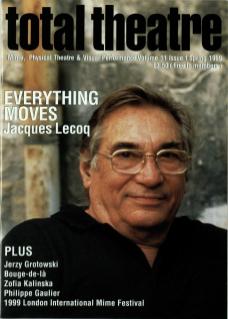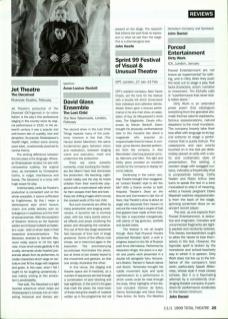The second show in the Lost Child Trilogy repeats many of the problems inherent in the first (The Hansel Gretel Machine): the same fundamental gaps between vision and realisation, between staging intent and execution, mark and undermine the production.
There are some powerful moments, most involving the Nosferatu-like March Hare that dominates the production. His haunting, nightmarish lullaby and the way he hooks children from their womb-like playground with a meat cleaver with which he then scrapes their feet and toes – these are chilling images which convey the cracked world of the lost child.
But such moments are offset by many production and staging weaknesses. A dynamic set is clumsily used, with too many poorly executed effects and props cluttering the space and disrupting the narrative. The use of Noh-like stage assistants fails because of their lack of stage presence. Some of the effects look cheap, not in intent but again in the execution. The accompanying soundscape illuminates the piece, but at times is too closely keyed to the movement and gesture, so that one simply illustrates the other.
In this venue, the staging and theatre space are ill-matched, as a number of sequences are lost through a combination of poor blocking and bad sightlines. In the end it's the gaps that mark the piece: the most basic of these being the wealth of material written up in the programme but not present on the stage. The research that informs the work finds no expression in what we see from the stage. This is a dramaturgical lack.

